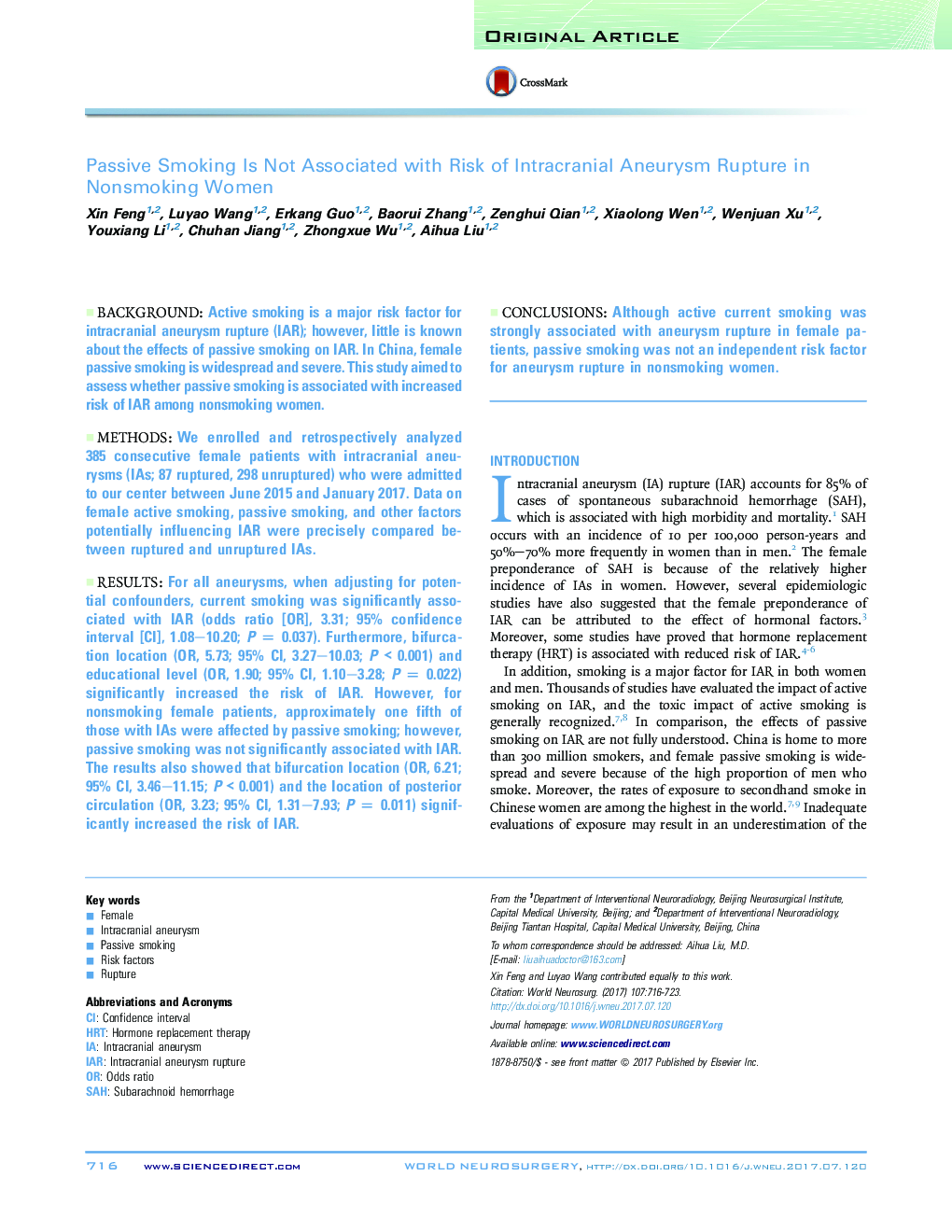| Article ID | Journal | Published Year | Pages | File Type |
|---|---|---|---|---|
| 5633937 | World Neurosurgery | 2017 | 8 Pages |
BackgroundActive smoking is a major risk factor for intracranial aneurysm rupture (IAR); however, little is known about the effects of passive smoking on IAR. In China, female passive smoking is widespread and severe. This study aimed to assess whether passive smoking is associated with increased risk of IAR among nonsmoking women.MethodsWe enrolled and retrospectively analyzed 385 consecutive female patients with intracranial aneurysms (IAs; 87 ruptured, 298 unruptured) who were admitted to our center between June 2015 and January 2017. Data on female active smoking, passive smoking, and other factors potentially influencing IAR were precisely compared between ruptured and unruptured IAs.ResultsFor all aneurysms, when adjusting for potential confounders, current smoking was significantly associated with IAR (odds ratio [OR], 3.31; 95% confidence interval [CI], 1.08-10.20; PÂ = 0.037). Furthermore, bifurcation location (OR, 5.73; 95% CI, 3.27-10.03; P < 0.001) and educational level (OR, 1.90; 95% CI, 1.10-3.28; PÂ = 0.022) significantly increased the risk of IAR. However, for nonsmoking female patients, approximately one fifth of those with IAs were affected by passive smoking; however, passive smoking was not significantly associated with IAR. The results also showed that bifurcation location (OR, 6.21; 95% CI, 3.46-11.15; P < 0.001) and the location of posterior circulation (OR, 3.23; 95% CI, 1.31-7.93; PÂ = 0.011) significantly increased the risk of IAR.ConclusionsAlthough active current smoking was strongly associated with aneurysm rupture in female patients, passive smoking was not an independent risk factor for aneurysm rupture in nonsmoking women.
